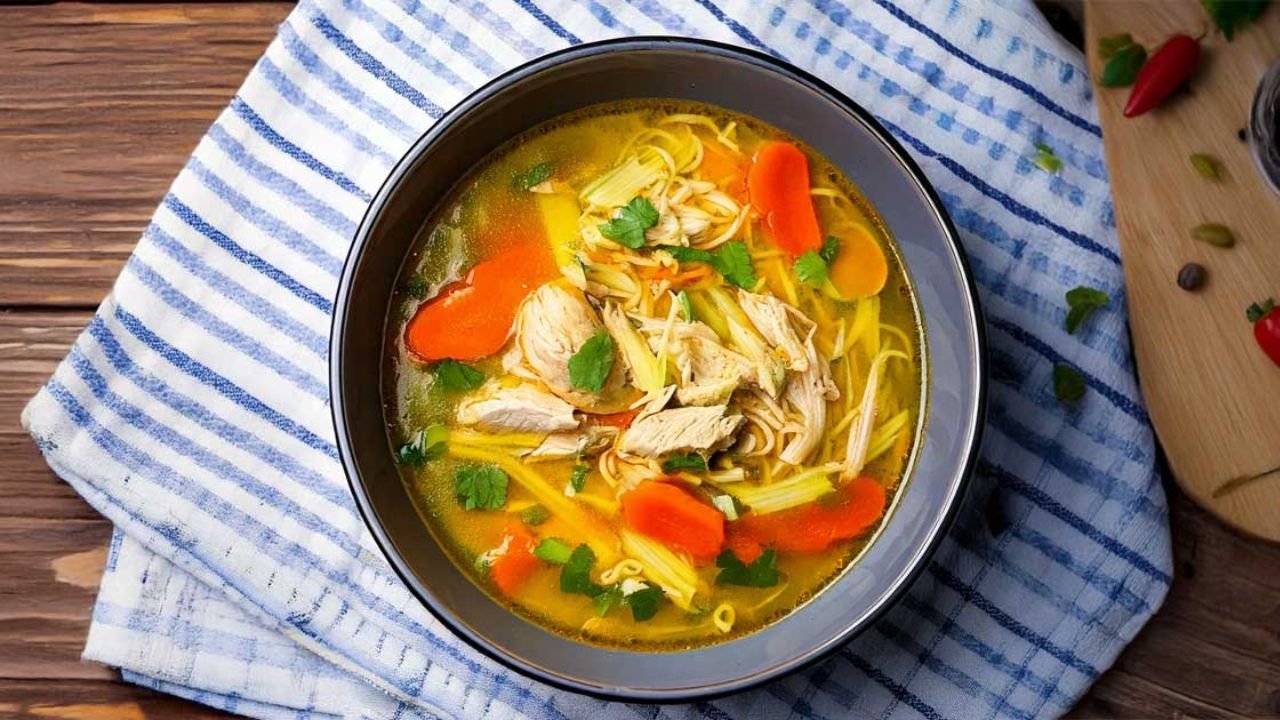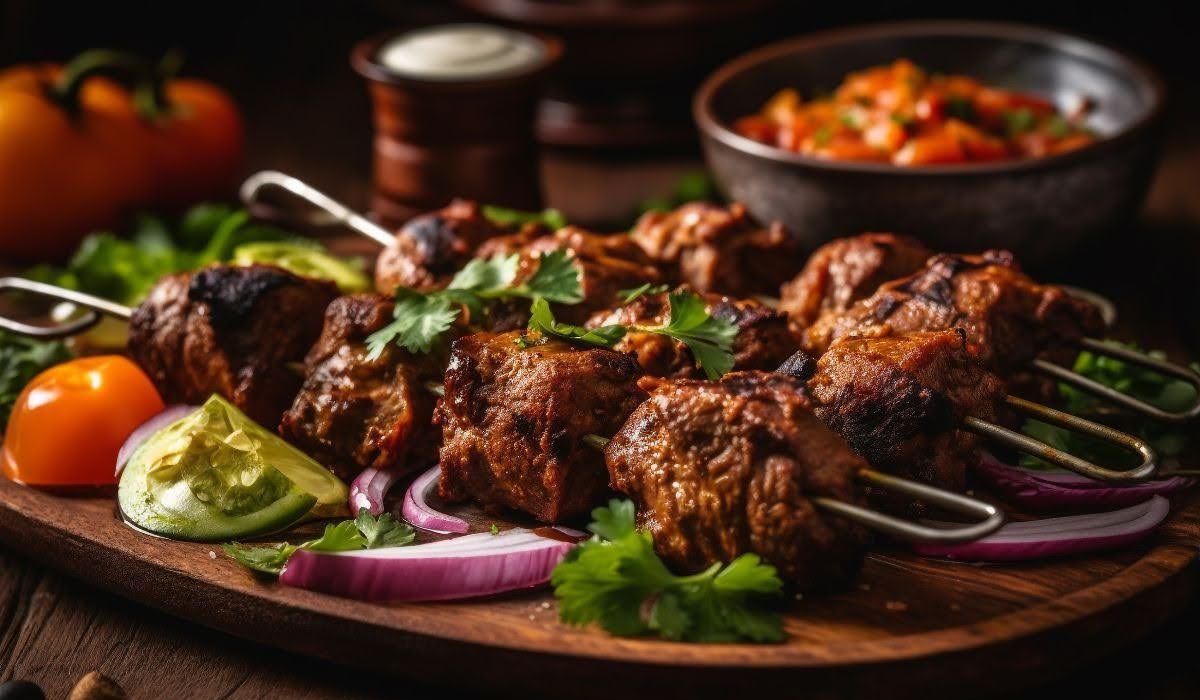There’s nothing quite like a warm, steaming bowl of ginger chicken noodle soup with carrots and celery to bring comfort and nourishment to your day. For health enthusiasts, home cooks, and food bloggers alike, this soup is a wholesome blend of flavor and nutrition. Packed with the anti-inflammatory properties of ginger, the sweetness of carrots, the crunch of celery, and protein-rich chicken, this dish hits all the right notes.
Whether you’re fighting off a cold, looking for a quick weeknight dinner, or experimenting with flavorful yet healthy recipes, this soup is your go-to culinary solution. This article dives into its health benefits, a step-by-step recipe, helpful tips, and more. By the time you finish reading, this delicious bowl of comfort will be simmering on your stove.
The Health Benefits of Ginger, Carrots, and Celery in Soups
Adding ginger, carrots, and celery to your chicken noodle soup isn’t just about boosting flavors—it’s about enhancing your health. These ingredients are nutritional powerhouses, and their combination takes this soup to the next level.
Ginger’s Healing Powers
Fresh ginger is renowned for its anti-inflammatory and digestive properties. Here’s why you should include it:
- Immune-booster: Ginger contains compounds like gingerol that fight off illness and improve immunity.
- Aids digestion: It’s known to reduce bloating, nausea, and improve gut health.
- Reduces inflammation: Useful for relieving joint pain and soothing an upset stomach.
Carrots for a Dose of Sweetness and Vitamins
Carrots, with their natural sweetness, complement the savory flavors of this soup. They are:
- High in beta carotene (converted to Vitamin A): Boosts eye health and immunity.
- Rich in antioxidants: Helps fight free radicals.
- Packed with fiber: Aids digestion and promotes gut health.
Celery’s Nutritional Kick
Crunchy celery adds texture to the soup while providing numerous health benefits:
- Low in calories, high in nutrients: Celery is a diet-friendly vegetable.
- Beneficial for digestion: Its high water content and fiber assist in maintaining a healthy digestive system.
- Contains anti-inflammatory properties: Perfect for those seeking a balanced, nutritious meal.
Now that you understand the health benefits, it’s time to craft your very own ginger chicken noodle soup with carrots and celery.
Crafting the Perfect Ginger Chicken Noodle Soup Recipe
Making this soup at home is straightforward and rewarding. With a few fresh ingredients and simple steps, you’ll have a flavorful dish that’s nutritious and satisfying.
Ingredients
Here’s what you’ll need:
- 1 tablespoon olive oil
- 1 medium onion, chopped
- 3 cloves garlic, minced
- 1 tablespoon fresh ginger, grated
- 2 large carrots, sliced
- 2 celery stalks, chopped
- 2 cups cooked chicken (shredded or diced)
- 6 cups chicken broth
- 1 ½ cups egg noodles (or any preferred noodles)
- Salt and pepper to taste
- Fresh parsley for garnish
Step-by-Step Preparation
Sauté the Aromatics
Heat olive oil in a large pot. Add the onions, garlic, and ginger. Sauté until fragrant.
Add Vegetables and Broth
Mix in the carrots and celery. Pour in the chicken broth, bringing it to a gentle boil.
Add the Chicken
Stir in the shredded chicken and simmer for 10 minutes to allow the flavors to meld together.
Cook the Noodles
Add the noodles and cook according to the package instructions, usually 5-7 minutes.
Season to Taste
Add salt and pepper to taste. Garnish with fresh parsley before serving.
Variations for Dietary Preferences
- Vegetarian: Replace chicken with chickpeas or tofu, and use vegetable broth instead.
- Gluten-Free: Substitute egg noodles with gluten-free pasta or rice noodles.
Tips for Enhancing Flavor and Nutritional Value
Take your ginger chicken noodle soup with carrots and celery to the next level with these pro tips:
Adding Herbs and Spices
- Try a dash of turmeric for an extra anti-inflammatory kick.
- Add freshly squeezed lemon juice for brightness.
- Enhance flavor with bay leaves or thyme during cooking.
Retaining Nutrients
- Avoid overcooking the vegetables to preserve their nutrients and crunch.
- Use bone broth for additional collagen and nutritional benefits.
Serving Suggestions and Pairings
A good soup deserves thoughtful presentation and perfect pairings.
How to Serve
- Ladle the soup into bowls and garnish with fresh parsley or green onions.
- Serve it warm with a crusty piece of bread or crackers.
Beverage Pairings
- Tea: Pair with mild herbal tea like chamomile or mint for a soothing experience.
- White Wine: A light and crisp white wine like Sauvignon Blanc complements the soup’s flavors beautifully.
You May Also Like: The Ultimate Guide to the Food Box at Athens County Fairgrounds
Conclusion
Warm, comforting, and healthy, this ginger chicken noodle soup with carrots and celery is the perfect meal for any occasion. Whether you’re looking to boost your immunity, enjoy a nutrient-rich dish, or just savor a bowl of heavenly flavors, this recipe delivers on all fronts.
Now it’s your turn to give it a try! What unique variations will you add to make it your signature dish? Share your creations and tag us in your posts!
FAQs
Can I freeze ginger chicken noodle soup with carrots and celery?
Yes, the soup freezes well. Just leave the noodles out and add them fresh when reheating to prevent them from becoming mushy.
How long can I store this soup in the refrigerator?
You can store it in an airtight container in the refrigerator for up to 4 days. Reheat before serving.
Can I make this soup in a slow cooker?
Absolutely! Simply add all the ingredients except the noodles to the slow cooker and cook on low for 6-8 hours. Add the noodles in the last 20 minutes of cooking.
What can I use as a substitute for chicken?
You can substitute chicken with tofu, tempeh, or even lentils for a vegetarian option.
What type of noodles work best for this recipe?
Egg noodles are a classic choice, but you can also use rice noodles, soba noodles, or even spiralized zucchini for a low-carb alternative.











